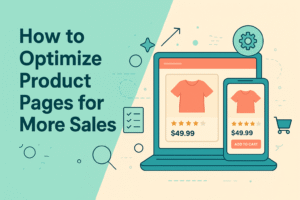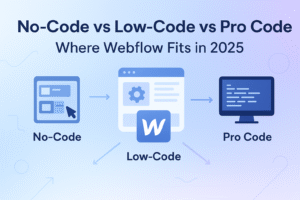Introduction For Shopify Theme:
In the bustling world of e-commerce, the design and functionality of your online store can make or break your success. One of the pivotal decisions you’ll make is selecting the best Shopify theme for your store. With countless options available, it’s crucial to navigate through the choices wisely. In this comprehensive guide, we’ll walk you through the essential steps to choose the perfect Shopify theme tailored to your brand and audience.
Understanding Your Brand and Audience:
Before delving into the sea of Shopify themes, it’s imperative to understand your brand identity and your target audience’s preferences. Your theme should reflect your brand’s values and aesthetics while resonating with your audience’s tastes and expectations. Consider the vibe you want to convey and the emotions you aim to evoke when visitors land at your store.
Exploring Shopify Theme Options:
Shopify boasts a diverse marketplace offering a plethora of themes, ranging from free to premium options. While free themes are a great starting point, premium themes often provide more extensive customization options and advanced features. Take your time to explore various themes, considering factors like design elements, layout flexibility, and built-in functionalities.
Key Factors to Consider When Choosing a Theme:
Here are the key factors you should keep in mind as you sift through the plethora of options:
1. Design and Aesthetics:
Imagine your Shopify theme as the storefront of your online shop. It’s the first thing your customers see, and you want to make a killer first impression. Look for themes that resonate with your brand’s vibe and values. Are you aiming for a sleek and modern look or something more rustic and handmade? Ensure the theme offers enough customization options to reflect your unique style.
Remember, the best Shopify theme isn’t just about being visually appealing; it should also convey professionalism and trustworthiness to your customers.
2. Responsiveness and Mobile-Friendliness:
In today’s world, your customers are browsing and shopping on all sorts of devices, from smartphones to tablets to desktop computers. Your Shopify theme needs to adapt seamlessly to all screen sizes and resolutions. Google also prioritizes mobile-friendly websites in its search results, so choosing a responsive theme isn’t just good for your users; it’s good for your SEO too.
3. Loading Speed and Performance:
Speed matters. Research shows that even a one-second delay in page load time can lead to a significant drop in conversions. Your chosen Shopify theme should be optimized for speed and performance, ensuring that your customers don’t have to wait around for your pages to load. Check out reviews and ratings to see if others have experienced any performance issues with the theme you’re considering.
4. SEO-Friendliness:
Speaking of SEO, your Shopify theme can play a crucial role in how easily your store gets discovered by potential customers. Look for themes that are built with SEO best practices in mind, such as clean code, customizable meta tags, and structured data markup. The best Shopify themes will make it easy for search engines like Google to crawl and index your content, ultimately improving your chances of ranking higher in search results.
As you weigh these key factors, remember that the best Shopify theme for your store might not necessarily be the flashiest or most popular one out there. It’s all about finding the perfect balance between design, functionality, and user experience that aligns with your brand and resonates with your target audience.
Assessing Theme Compatibility with Your Business Needs:
Your chosen Shopify theme should seamlessly integrate with your business requirements and operational processes. Consider factors like compatibility with your product range and inventory size, as well as integration with third-party apps and plugins essential for your store’s functionality. Assess how the theme aligns with your marketing and sales strategies, ensuring it supports your business objectives effectively.
Reviewing User Experience and Navigation:
A stellar user experience is paramount for driving conversions and fostering customer loyalty. Evaluate the theme’s navigation and user interface, prioritizing intuitive layouts and easy-to-navigate menus. Clear calls to action (CTAs) and prominent product showcases enhance engagement and encourage visitors to explore your offerings further. Take note of user reviews and feedback to gauge the theme’s usability and overall satisfaction among users.
Ensuring Support and Updates:
Selecting a Shopify theme backed by reliable support and frequent updates is essential for long-term success. Research the reputation of theme developers and their responsiveness to customer inquiries and support requests. Regular updates ensure compatibility with Shopify’s evolving platform and address any bugs or security vulnerabilities promptly. Comprehensive documentation and resources provided by the theme developer can also facilitate troubleshooting and customization processes.
Budgeting and Cost Considerations:
While budgetary constraints may influence your decision, consider the long-term value and return on investment offered by premium Shopify themes. Factor in potential customization costs and additional expenses associated with theme implementation and maintenance. Prioritize themes that offer scalability and flexibility to accommodate future growth and evolving business needs.
Tips for Making the Final Decision:
As you narrow down your options, create a shortlist of themes that best align with your requirements and preferences. Take advantage of demo versions to test drive each theme and assess its functionality and customization options. Seek feedback from peers or industry experts to gain valuable insights and perspectives. Ultimately, make an informed decision based on your evaluation criteria, ensuring the chosen theme sets the stage for your online store’s success.
Conclusion:
In conclusion, selecting the best Shopify theme for your online store is a pivotal decision that requires careful consideration and research. By understanding your brand, audience, and business needs, evaluating key factors, and making an informed decision, you can set your online store up for success and create memorable experiences for your customers. Choose wisely, and let your Shopify theme elevate your brand presence and drive growth in the competitive e-commerce landscape.











